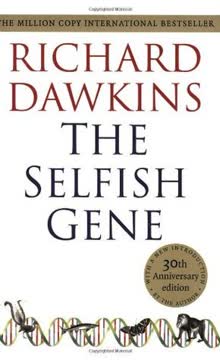Key Takeaways
1. Systems are Everywhere: A New Way of Thinking
In one way or another, we are forced to deal with complexities, with “wholes” or “systems,” in all fields of knowledge.
Ubiquity of Systems. The concept of "systems" has permeated all fields of science and popular thinking, reflecting a shift in how we understand the world. From industrial enterprises to pure science, systems thinking is dominant, necessitating a re-orientation in scientific thought to deal with complexities and interconnectedness. This approach is not just a technological trend but a fundamental change in how we categorize and analyze information.
Beyond Traditional Boundaries. The traditional scientific method of isolating elements and analyzing them independently is insufficient for understanding complex systems. Acknowledging the interrelationships between elements is crucial, requiring a holistic approach that considers the system as an entity in its own right. This shift is evident across various disciplines, from physics to history, indicating a broad consensus on the need for a new perspective.
Examples of Systemic Thinking. The "systems approach" is increasingly applied to pressing societal issues like pollution, traffic congestion, and urban planning, recognizing the interdependence of various elements. This approach emphasizes the need to consider and evaluate factors as interdependent components of a total system, highlighting the interconnectedness of societal elements. This holistic perspective is essential for addressing complex, multifaceted problems effectively.
2. General System Theory: Bridging the Disciplines
There exist models, principles, and laws that apply to generalized systems or their subclasses, irrespective of their particular kind, the nature of their component elements, and the relations or “forces” between them.
The Quest for Unity. General System Theory (GST) seeks to identify universal principles applicable to systems across diverse fields, promoting interdisciplinary communication and avoiding unnecessary duplication of effort. This approach recognizes that similar problems and conceptions have evolved independently in various disciplines, suggesting underlying commonalities. GST aims to provide a framework for understanding these commonalities and fostering a more integrated view of science.
Beyond Reductionism. GST challenges the traditional scientific approach of reducing complex phenomena to simpler components, emphasizing the importance of organization and interaction. It acknowledges that understanding systems requires considering the relationships between elements, not just the elements themselves. This perspective is particularly relevant in fields like biology and social sciences, where complex interactions are central to understanding phenomena.
A Tool for Understanding. GST provides models that can be applied and transferred across different fields, offering solutions to real-world challenges. It also safeguards against vague analogies by focusing on isomorphic processes that reflect underlying laws applicable to systems in general. By providing a framework for understanding the unity of real phenomena, GST supports the scientific investigation of all kinds of systems.
3. Open Systems: Life's Defining Characteristic
Every living organism is essentially an open system.
The Essence of Life. Living organisms are fundamentally open systems, constantly exchanging matter and energy with their environment. This continuous exchange, known as metabolism, distinguishes living systems from closed systems, which are isolated from their surroundings. Understanding the organism as an open system is crucial for comprehending its unique characteristics and behaviors.
Beyond Conventional Physics. Conventional physics, primarily focused on closed systems, is inadequate for fully explaining the dynamics of living organisms. The theory of open systems expands physical theory to include irreversible processes and steady states, providing a more accurate framework for understanding biological phenomena. This expansion allows for a more nuanced understanding of the complexities of life.
Equifinality and Evolution. Open systems exhibit equifinality, reaching the same final state from different initial conditions, a concept vital to understanding biological regulation. They also reconcile the apparent contradiction between entropy and evolution, demonstrating that living systems can maintain or increase order by importing negative entropy. These insights highlight the unique properties of open systems and their relevance to understanding life's processes.
4. Information and Feedback: The Essence of Control
The amount of information conveyed in one answer is a decision between two alternatives.
Information as a Measure of Order. Information, measured in bits, is directly related to negative entropy, providing a means to quantify order and organization within systems. This concept is central to communication theory, where information flow is crucial for control and regulation. Understanding information as a measure of order allows for a deeper analysis of how systems maintain stability and achieve goals.
Feedback Mechanisms. Feedback systems, involving receptors, centers, and effectors, are essential for self-regulation in both technology and living organisms. These systems monitor outputs and adjust inputs to maintain stability or achieve specific goals. The feedback model provides a framework for understanding how systems adapt and respond to changes in their environment.
Cybernetics and Teleology. Cybernetics, the science of control systems, demonstrates that feedback mechanisms underlie teleological or purposeful behavior in machines, organisms, and social systems. This perspective challenges the traditional view of teleology as a mysterious force, offering a scientific explanation for goal-directed behavior. However, it's important to recognize that feedback is just one type of regulation, and dynamic interactions also play a crucial role in system behavior.
5. Beyond Mechanism: Teleology and Organization
The world of the organisms appeared a product of chance, accumulated by the senseless play of random mutations and selection; the mental world as a curious and rather inconsequential epiphenomenon of material events.
Limitations of the Mechanistic View. The mechanistic worldview, rooted in classical physics, struggles to account for concepts like directiveness, order, and teleology, which are essential for understanding living organisms and social groups. This perspective, focused on reductionism and one-way causality, fails to capture the complexities of organized systems. Recognizing these limitations necessitates a shift towards a more holistic and integrative approach.
Embracing Teleology. Modern science acknowledges teleology and directiveness as legitimate areas of scientific inquiry, developing models to simulate purposeful behavior. These models, including equifinality, feedback, and adaptive systems, demonstrate that goal-directed behavior can be defined and understood within a scientific framework. This shift allows for a more comprehensive understanding of complex systems.
The Importance of Organization. Organization, a concept often overlooked in conventional physics, is central to understanding living organisms and societies. System theory provides tools to define and analyze notions like wholeness, growth, differentiation, and hierarchical order, enabling a more nuanced understanding of complex systems. By embracing these concepts, science can move beyond the limitations of the mechanistic worldview.
6. The Hierarchy of Systems: Unity Through Diversity
We presently “see” the universe as a tremendous hierarchy, from elementary particles to atomic nuclei, to atoms, molecules, high-molecular compounds, to the wealth of structures (electron and light-microscopic) between molecules and cells, to cells, organisms and beyond to supra-individual organizations.
Systemic Stratification. The universe is structured as a hierarchy of nested systems, where each level shapes and depends on the levels below it. This hierarchical organization is a fundamental principle of general systems theory, providing a framework for understanding the interconnectedness of all things. Recognizing this hierarchy allows for a more comprehensive and integrated view of reality.
Top-Down and Bottom-Up Causation. Systems maintain themselves through a combination of top-down and bottom-up causation. Top-down causation involves the whole exerting governing influences on its parts, while bottom-up causation involves the parts acting together to provide for the properties of the whole. This interplay between levels is essential for understanding how systems function and evolve.
Unity Through Diversity. The concept of a levels-architecture of nested sub-systems, combined with a top-level model characterizing any system from an external perspective, provides an ontological justification of the usefulness of thinking at the systemic meta-level. This meta-level perspective allows us to discover a diversity of actual and possible sub-levels within systems that are nevertheless unified from an external perspective. The slogan “unity through diversity” represents a fundamental principle regarding the systemic make-up of the world.
7. Systems Philosophy: Reorienting Our Worldview
As every scientific theory of broader scope, general system theory has its “metascientific” or philosophical aspects.
A New Paradigm. General System Theory (GST) introduces a new scientific paradigm that contrasts with the analytic, mechanistic, one-way causal paradigm of classical science. This new paradigm, centered around the concept of "system," reorients thought and worldview, offering a more holistic and integrated perspective. This shift in perspective has profound implications for how we understand the world and our place within it.
Systems Ontology and Epistemology. Systems ontology explores what is meant by "system" and how systems are realized at various levels of observation, while systems epistemology examines how we gain knowledge of these systems. This epistemology differs significantly from logical positivism, emphasizing interaction between knower and known and acknowledging the influence of biological, psychological, cultural, and linguistic factors. This leads to a "perspective" philosophy that recognizes the limitations of any single way of knowing.
Values and the Human Condition. Systems philosophy is concerned with the relations of man and world, addressing questions of values and ethics. By viewing reality as a hierarchy of organized wholes, it offers a different image of man than that of a world of physical particles governed by chance. This perspective bridges the gap between science and the humanities, technology and history, and natural and social sciences, fostering a more integrated understanding of the human condition.
8. The Individual in the System: A Humanistic Concern
This humanistic concern of general system theory as I understand it makes a difference to mechanistically oriented system theorists speaking solely in terms of mathematics, feedback and technology and so giving rise to the fear that system theory is indeed the ultimate step towards mechanization and devaluation of man and towards technocratic society.
The Dangers of Mechanization. There is a risk that the systems movement, particularly when centered in computer technology and systems engineering, could lead to the mechanization and devaluation of man. This concern arises from the potential for the "human element" to be seen as an unreliable component to be eliminated or controlled, leading to a technocratic society where individuals are reduced to cogs in a machine. It is important to address these concerns and ensure that systems thinking is guided by humanistic values.
Upholding Humanism. Von Bertalanffy's defense of humanism is substantiated by his ontological models, which provide a pragmatic account of the dangers and opportunities inherent in social systems. GST's ontology of social systems allows humans to envisage a normativity that does better justice to “unity through diversity” than the current set-up does, by embracing the diversity of human perspectives on the world without undermining the unity of our responsibilities to each other. Views about values determine the quality of the meta-level perspective that governs societies, and hence theories about values and value-determinations are a core element of systems thinking in the tradition of GST.
The Ultimate Precept. The ultimate precept of a theory of organization should not be a manual for dictators to subjugate human beings, but a warning that the Leviathan of organization must not swallow the individual. Human society is not a community of ants or termites, but is based upon the achievements of the individual and is doomed if the individual is made a cog in the social machine. This emphasis on the individual is crucial for ensuring that systems thinking serves to enhance human well-being and freedom, rather than diminish them.
Last updated:
Review Summary
General System Theory receives mixed reviews, with an average rating of 3.89 out of 5. Readers appreciate its groundbreaking ideas and interdisciplinary approach, praising Bertalanffy's attempt to unify science and provide a new perspective on complex systems. However, some find the book repetitive, outdated, and challenging to read, especially in its mathematical and biological sections. Critics argue that it fails to fully deliver on its promised goals, while supporters value its historical significance and enduring relevance in systems thinking across various disciplines.
Similar Books
Download PDF
Download EPUB
.epub digital book format is ideal for reading ebooks on phones, tablets, and e-readers.












